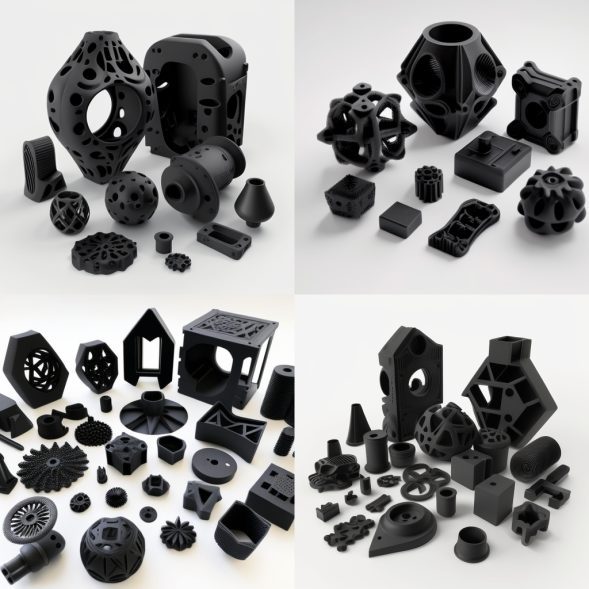Industrial 3D Printing: Advancements, Applications, and Benefits
Industrial 3D printing, also known as additive manufacturing, is a process of building three-dimensional objects using a digital file. It is a game-changing technology that has revolutionized manufacturing, enabling the creation of complex designs with high precision and accuracy. Industrial 3D printing has gained popularity in recent years, as it offers several benefits over traditional manufacturing processes. This article explores the advancements, applications, and benefits of industrial 3D printing.
Advancements in Industrial 3D Printing
Industrial 3D printing has come a long way since its inception. The technology has advanced significantly, making it more accessible and affordable for businesses of all sizes. Some of the notable advancements in industrial 3D printing include:
- Improved Materials: Industrial 3D printing can now use a wide range of materials, including plastics, metals, ceramics, and composites. This has opened up new possibilities for manufacturing complex designs with different properties.
- High-Speed Printing: The latest industrial 3D printers can print at speeds of up to 1000 mm/s, making it possible to produce large quantities of parts quickly.
- Large-Scale Printing: Industrial 3D printing can now produce large-scale parts, up to several meters in size. This is particularly useful in industries such as aerospace and automotive, where large parts are required.
- Multi-Material Printing: Industrial 3D printers can now print with multiple materials simultaneously, allowing for the creation of complex designs with different properties.
Applications of Industrial 3D Printing
Industrial 3D printing has a wide range of applications across various industries. Some of the most common applications of industrial 3D printing include:
- Aerospace: Industrial 3D printing is used to create lightweight and complex parts for aircraft and spacecraft. This helps to reduce the weight of the aircraft, which in turn improves fuel efficiency and reduces emissions.
- Automotive: Industrial 3D printing is used to create prototypes, tooling, and end-use parts for cars. This helps to reduce production time and costs, while also improving the quality of the parts.
- Healthcare: Industrial 3D printing is used to create custom implants, prosthetics, and surgical tools. This helps to improve patient outcomes and reduce recovery time.
- Architecture: Industrial 3D printing is used to create complex architectural designs, including building facades, sculptures, and models.
Benefits of Industrial 3D Printing
Industrial 3D printing offers several benefits over traditional manufacturing processes. Some of the key benefits of industrial 3D printing include:
- Reduced Costs: Industrial 3D printing can reduce production costs by eliminating the need for tooling and reducing material waste.
- Faster Time-to-Market: Industrial 3D printing can reduce the time it takes to bring a product to market by enabling rapid prototyping and faster production.
- Customization: Industrial 3D printing enables the creation of custom designs and parts, which is particularly useful in industries such as healthcare and aerospace.
- Improved Quality: Industrial 3D printing can produce parts with high precision and accuracy, resulting in improved quality and consistency.
FAQs
- What is industrial 3D printing?
Industrial 3D printing is a process of building three-dimensional objects using a digital file. It is also known as additive manufacturing.
- What materials can be used in industrial 3D printing?
Industrial 3D printing can use a wide range of materials, including plastics, metals, ceramics, and composites.
- What are the benefits of industrial 3D printing?
Industrial 3D printing offers several benefits, including reduced costs, faster time-to-market, customization, and improved quality.
- What are the applications of industrial 3D printing?
Industrial 3D printing has a wide range of applications across various industries, including aerospace, automotive, healthcare, and architecture.
Conclusion
Industrial 3D printing is a game-changing technology that has revolutionized manufacturing. With its many advancements, applications, and benefits, it has become an essential tool for businesses looking to stay competitive in today’s fast-paced market. As the technology continues to evolve, we can expect to see even more innovative applications and benefits in the years to come.

0 Comments